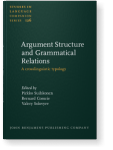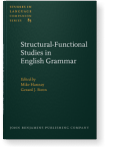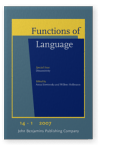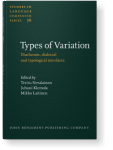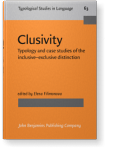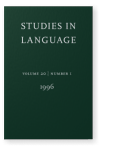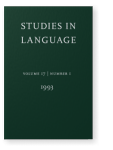Dik Bakker
List of John Benjamins publications for which Dik Bakker plays a role.
2012 Three takes on grammatical relations: A view from the languages of Europe and North and Central Asia Argument Structure and Grammatical Relations: A crosslinguistic typology, Suihkonen, Pirkko, Bernard Comrie and Valery Solovyev (eds.), pp. 295–324 | Article
In this contribution we discuss three different approaches to grammatical relations (GR), all situated within the functional-typological paradigm. Taking the major distinctions from these as a point of departure, we construct a three-way typology to classify languages with respect to GRs. Finally,… read more
2007 Another take on the notion Subject Structural-Functional Studies in English Grammar: In honour of Lachlan Mackenzie, Hannay, Mike and Gerard J. Steen (eds.), pp. 141–158 | Article
Linguistic theories typically have a static, competence-based view of the notion Subject. In this view speakers choose their Subjects freely from the relevant constituents of a clause, typically the arguments of the main predicate. However, when one looks at what speakers actually do, it becomes… read more
2007 Bound person forms in ditransitive clauses revisited Ditransitivity, Siewierska, Anna and Willem B. Hollmann (eds.), pp. 103–125 | Article
In a recent article Gensler (2003) has argued that little can be said about the ordering of bound person markers of the T(heme) and R(ecipient) relative to each other or relative to the verb stem apart from the fact that the outer markers are likely to be the result of a second-level cliticization… read more
2006 Bi-directional vs. uni-directional asymmetries in the encoding of semantic distinctions in free and bound person forms Types of Variation: Diachronic, dialectal and typological interfaces, Nevalainen, Terttu, Juhani Klemola and Mikko Laitinen (eds.), pp. 21–50 | Article
2005 Inclusive and exclusive in free and bound person forms Clusivity: Typology and case studies of the inclusive–exclusive distinction, Filimonova, Elena (ed.), pp. 151–178 | Chapter
1996 The Distribution of Subject and Object Agreement and Word Order Type Studies in Language 20:1, pp. 115–161 | Article
The article examines the distribution and formal realization of Subject and Object agreement markers in different word order types on the basis of a sample of 237 languages. Special attention is paid to the genetic and areal stratification of agreement markers and the impact of these two parameters… read more
1993 A Method of Language Sampling Studies in Language 17:1, pp. 169–203 | Article
In recent years more attention is being paid to the quality of language samples in typological work. Without an adequate sampling strategy, samples may suffer from various kinds of bias. In this article we propose a sampling method in which the genetic criterion is taken as the most important:… read more
